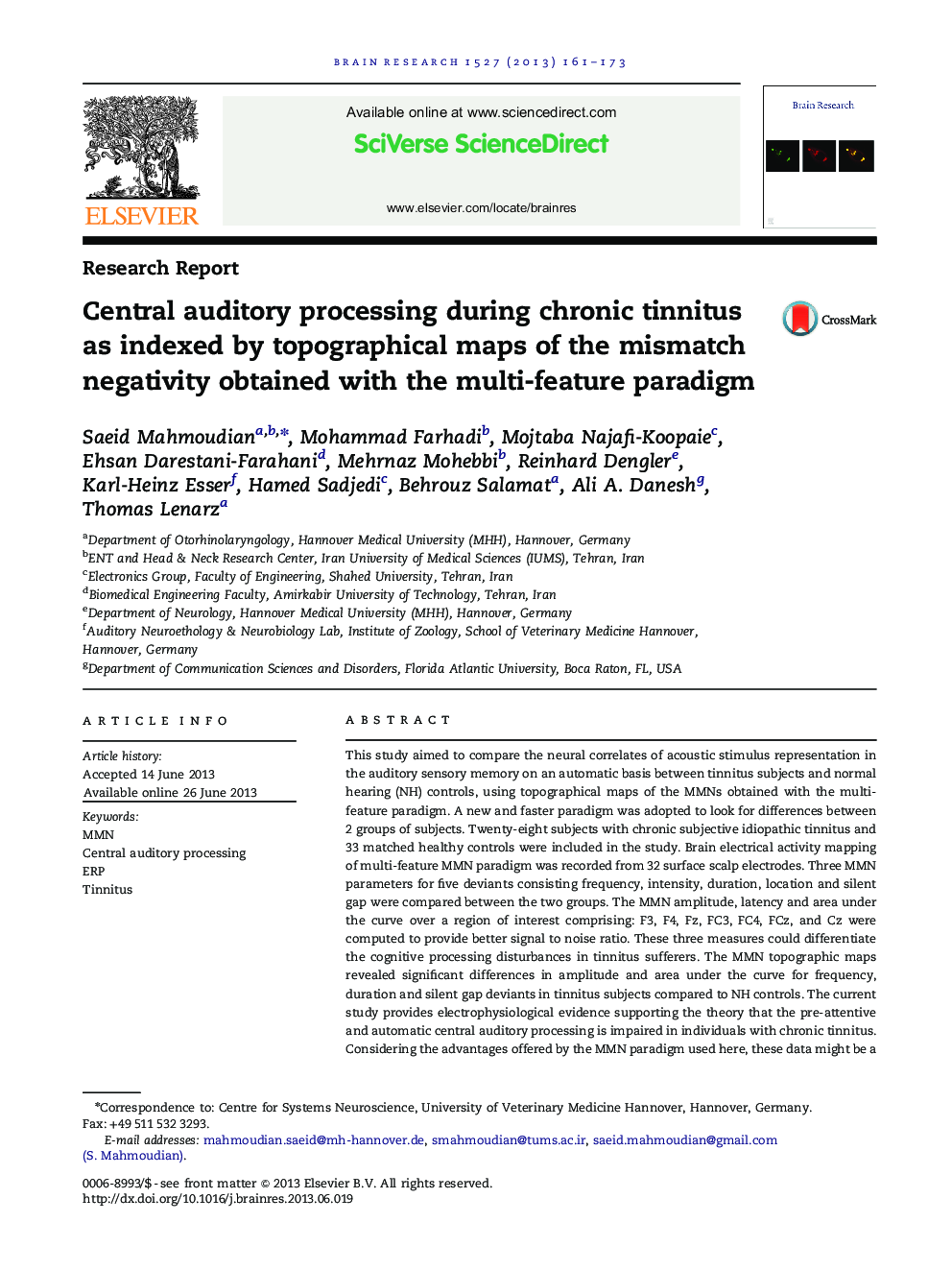| Article ID | Journal | Published Year | Pages | File Type |
|---|---|---|---|---|
| 4324582 | Brain Research | 2013 | 13 Pages |
•Tinnitus subjects indicated a deficit in pre-attentive central auditory processing mechanisms.•MMN amplitude and area under the curve decreased for three deviants of frequency, duration and silent gap in tinnitus patients.•Impaired silence modeling and perceiving in tinnitus subjects’ brain affected the perception of silent gap.•The MMNs alterations can be a cause of neuroplastic changes in the brain.
This study aimed to compare the neural correlates of acoustic stimulus representation in the auditory sensory memory on an automatic basis between tinnitus subjects and normal hearing (NH) controls, using topographical maps of the MMNs obtained with the multi-feature paradigm. A new and faster paradigm was adopted to look for differences between 2 groups of subjects. Twenty-eight subjects with chronic subjective idiopathic tinnitus and 33 matched healthy controls were included in the study. Brain electrical activity mapping of multi-feature MMN paradigm was recorded from 32 surface scalp electrodes. Three MMN parameters for five deviants consisting frequency, intensity, duration, location and silent gap were compared between the two groups. The MMN amplitude, latency and area under the curve over a region of interest comprising: F3, F4, Fz, FC3, FC4, FCz, and Cz were computed to provide better signal to noise ratio. These three measures could differentiate the cognitive processing disturbances in tinnitus sufferers. The MMN topographic maps revealed significant differences in amplitude and area under the curve for frequency, duration and silent gap deviants in tinnitus subjects compared to NH controls. The current study provides electrophysiological evidence supporting the theory that the pre-attentive and automatic central auditory processing is impaired in individuals with chronic tinnitus. Considering the advantages offered by the MMN paradigm used here, these data might be a useful reference point for the assessment of sensory memory in tinnitus patients and it can be applied with reliability and success in treatment monitoring.
